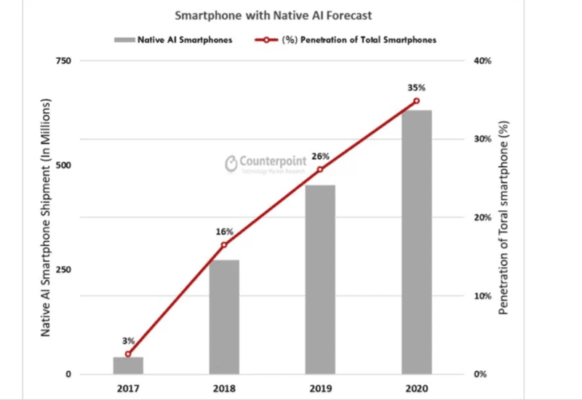PhoneArena said that many of the lawsuits revolve around Apple and Qualcomm, which have been unsuccessful. This could be a chance for Intel to jump into a partnership with Apple and provide components for the new iPhone.
While Qualcomm may no longer exclusively offer wireless chip modems to Apple, Qualcomm is proving itself as a big player in the SoC (System on Chip) chip market for mobile devices.
Qualcomm is ruling the SoC smartphone market in the third quarter of 2017, according to research firm Counterpoint.

Specifically, the company accounted for 42% of smartphone chip sales, up from 41% over the same period last year. Apple came in second with 20% of the market, down from 21% in the same period last year.
At the corresponding time, MediaTek ranks third with a 14% market share, a sharp drop from 18%, Samsung’s 3% increase, from 8% to 11%, and Huawei’s Hi-Silicon from 6% to 8%.
However, not everything is good for Qualcomm in the market for the quarter from July to September. In the high-end chip segment, with devices priced at $ 400 or more, the Qualcomm witness market share decreased.
Counterpoint explains that the cause comes from the fact that many phone companies offer their own processors on their own. Examples include high-end models from Apple (A-series), Samsung (Exynos) and Huawei (Kirin).

Shobhit Srivastava, an analyst at Counterpoint, said – Samsung, Apple, and Huawei are increasingly using their SoCs in their product portfolio in recent years.
As a result, the percentage of SoCs of the three major companies has increased from 20% to 30% in volume, which in part affects companies such as MediaTek, Marvell, and Broadcomm, while many are forced. Have to leave the game.
In the third quarter, sales of the SoC totaled $ 8 billion, up 19% from the same period last year. According to Counterpoint, industry focus has shifted from multi-core to new experiences integrated into the chip itself.
Both Apple and HiSilicon (Huawei) have launched SoCs that integrate dedicated neural processors (NPUs) into the Al task. And Counterpoint sees this trend going up in the next few years.

